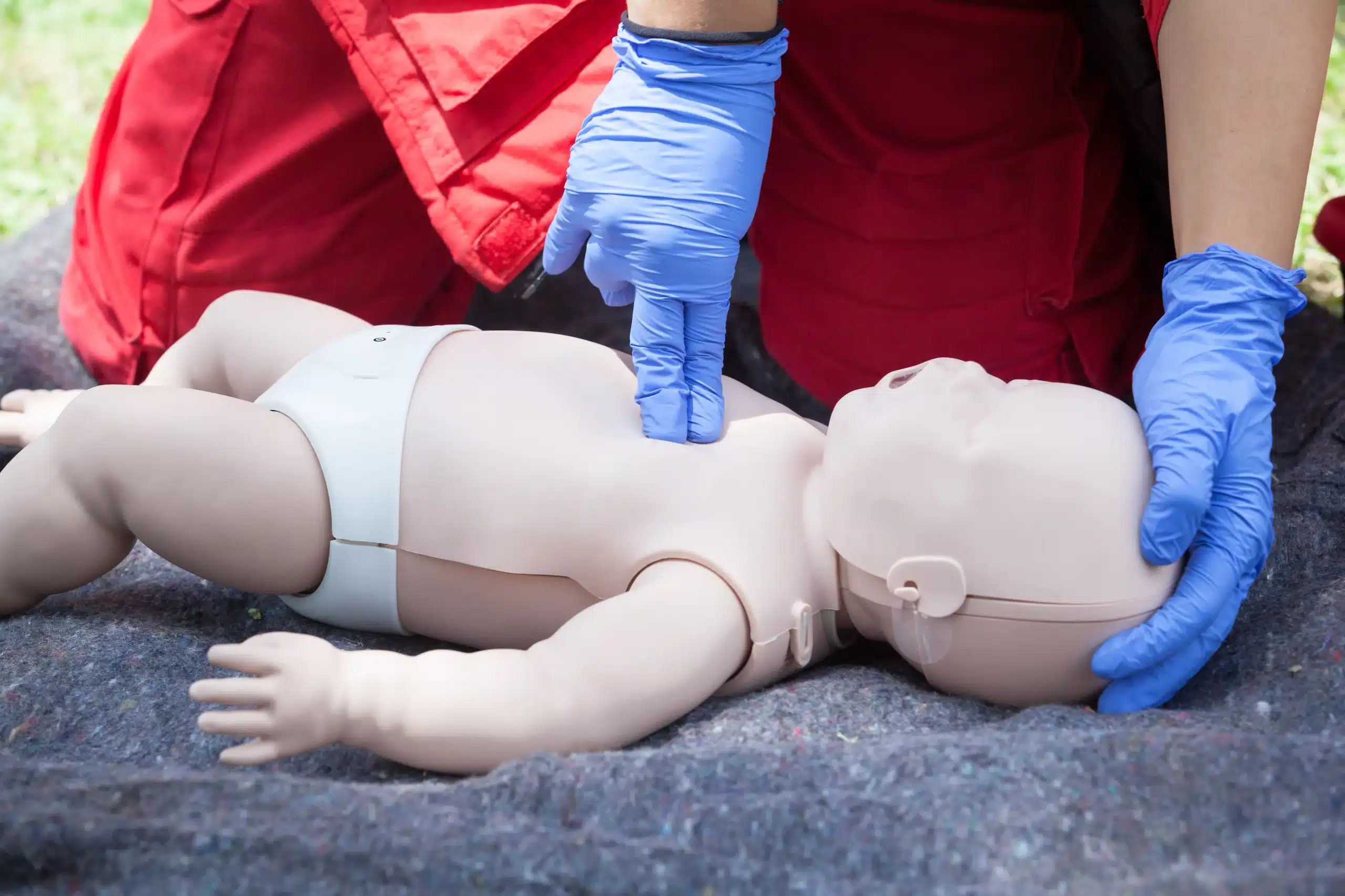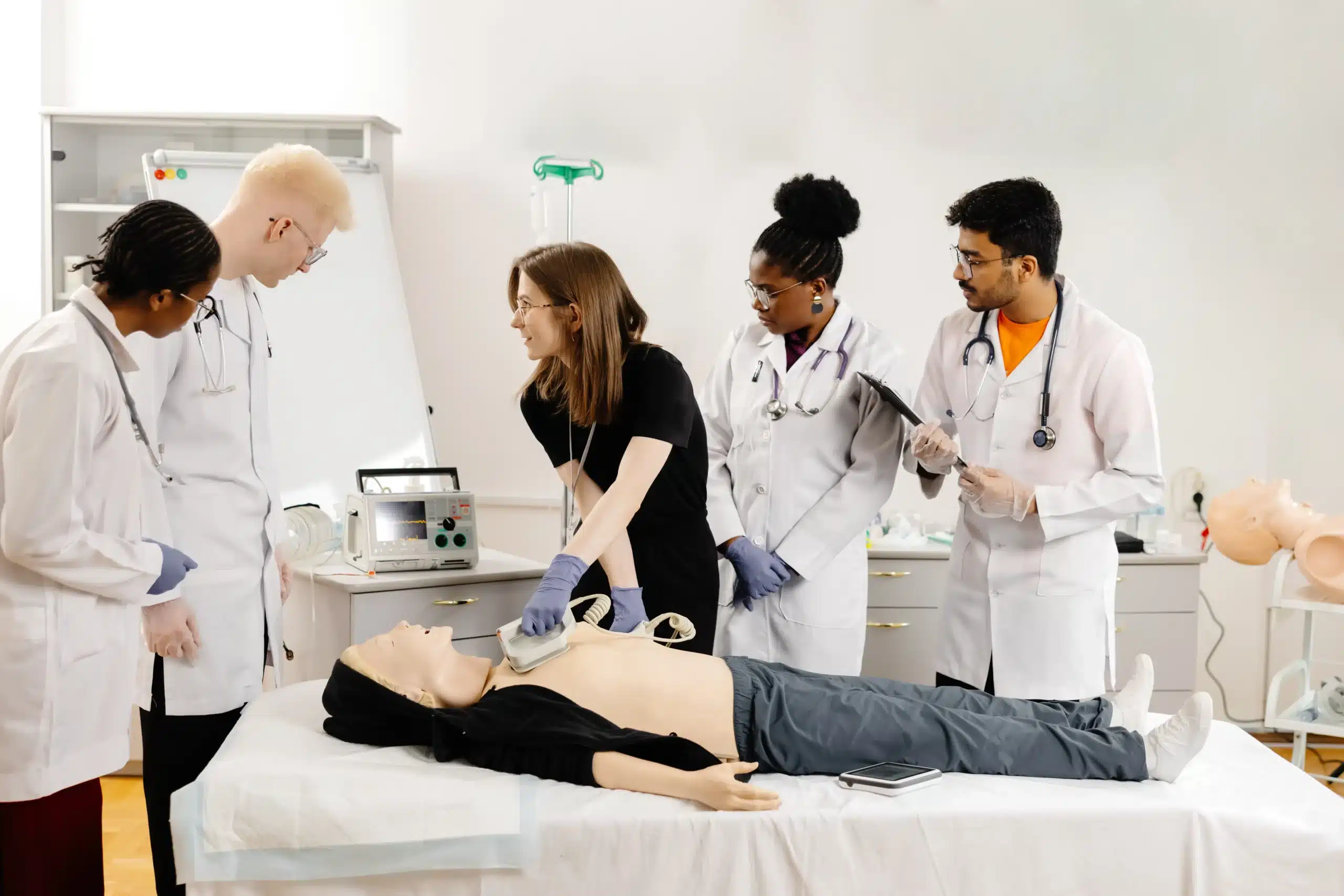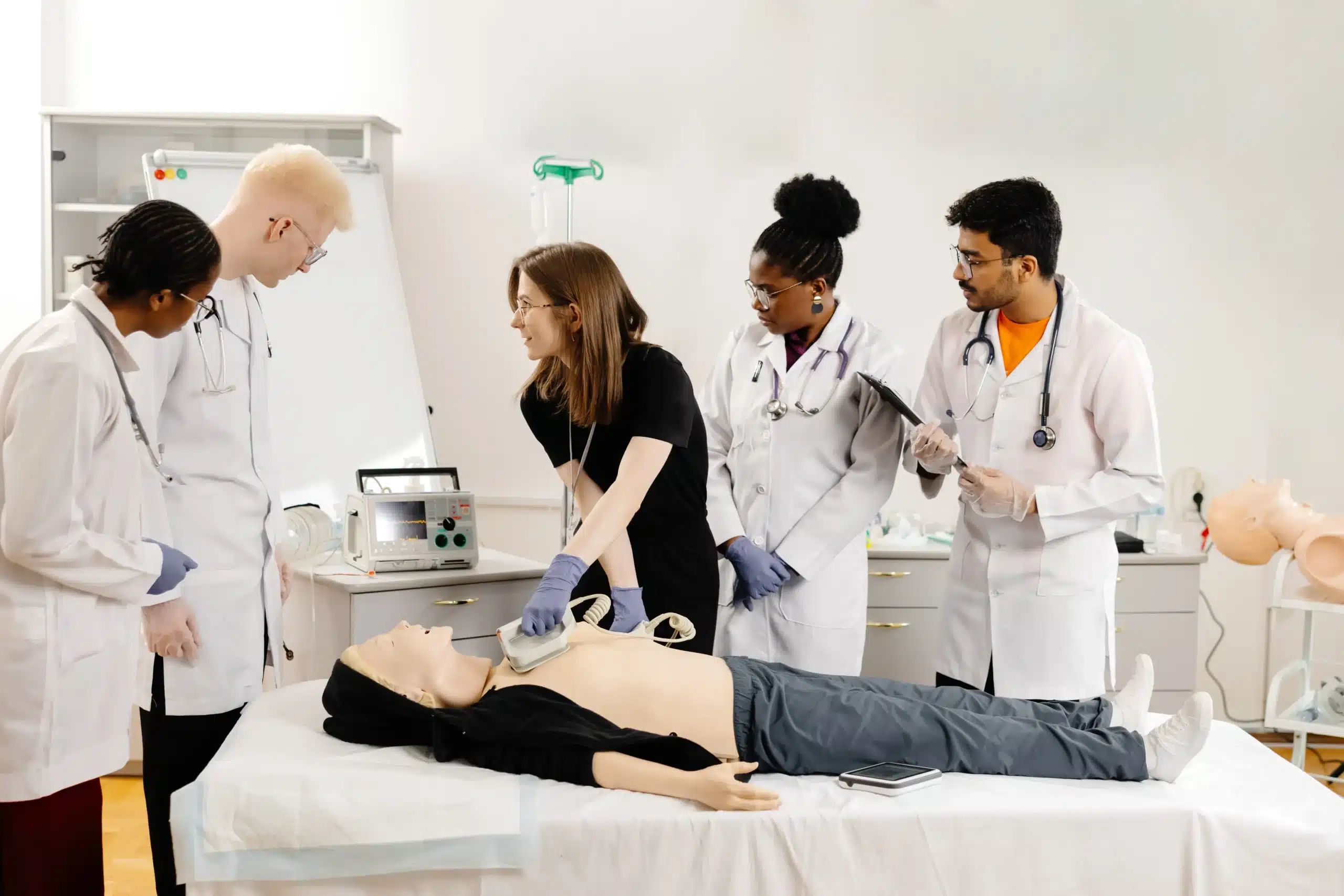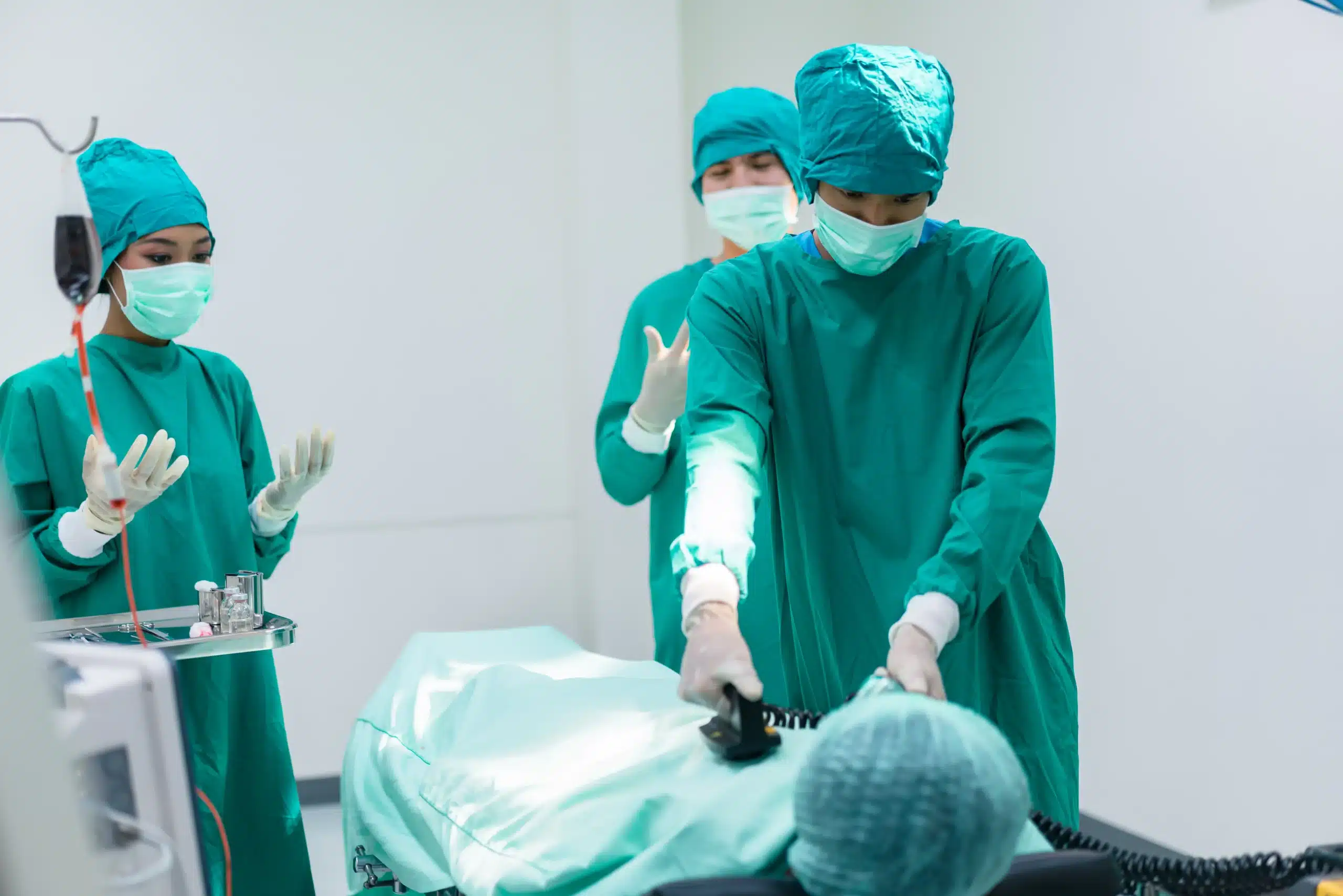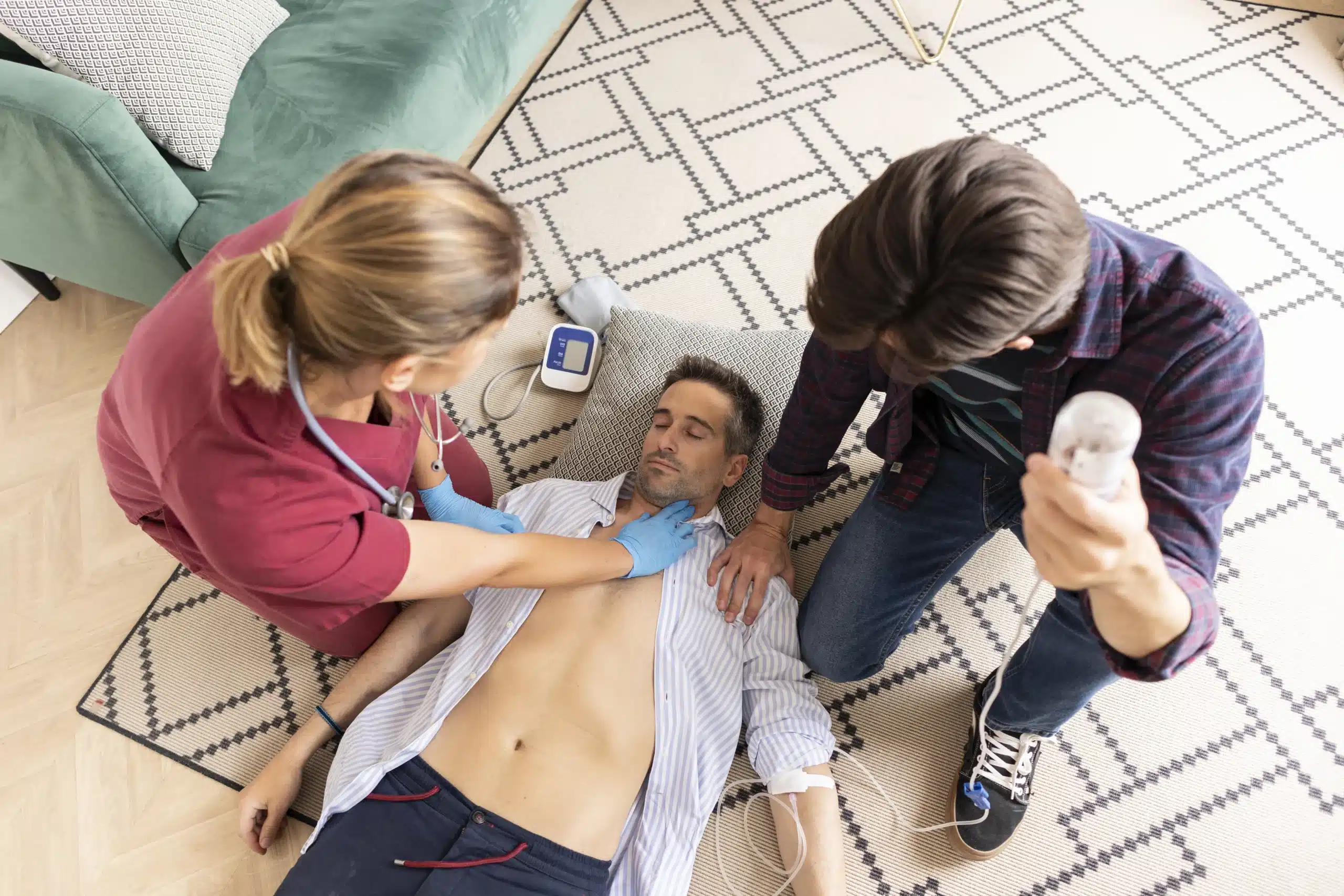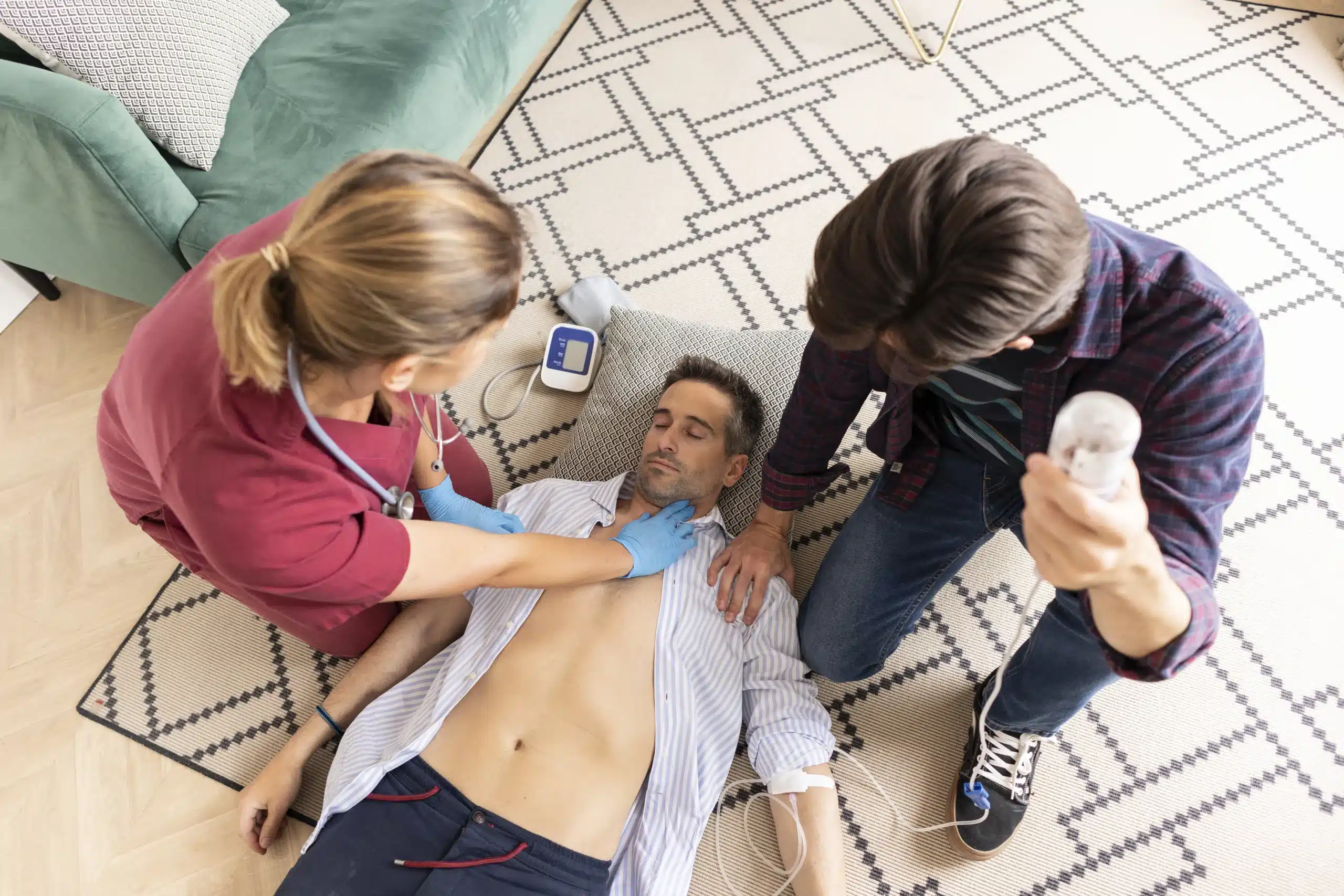Medical emergencies can happen anytime, anywhere. Being prepared and knowing how to respond can make all the difference. Basic Life Support (BLS) training provides the essential skills to assist someone experiencing cardiac arrest, respiratory distress, or choking. This training is invaluable for healthcare providers and anyone who wants to be prepared for the unexpected. If your search for “bls training near me” has brought you here, you’re on the right track. This guide will walk you through the essentials of BLS training, helping you understand its importance and guiding you toward finding the right training program in your area.
Key Takeaways
- BLS skills empower everyone: From healthcare providers to everyday people, learning BLS equips you to handle emergencies and potentially save lives. Seek out training that covers core skills like CPR, AED use, and relieving choking.
- Finding a BLS course that clicks is key: Explore local training centers, online directories, and community organizations to discover the right fit. Consider your schedule, learning preferences, and the provider’s reputation when making your choice.
- Quality matters in BLS training: Prioritize AHA-certified courses with experienced instructors, comprehensive materials, and hands-on practice. Reading reviews and comparing options can help you find a provider that meets your needs and budget.
What is BLS Training and Why Do You Need It?
BLS stands for Basic Life Support. It’s a critical set of skills everyone should know, especially healthcare providers. From recognizing someone having a cardiac arrest to providing high-quality chest compressions, BLS training equips you to potentially save a life. But it’s not just for medical professionals—anyone can benefit from learning these skills.
What Does BLS Training Cover?
BLS certification provides the essential, life-saving skills you need to respond to emergencies like cardiac arrest and respiratory distress. You’ll learn how to perform CPR, use an AED (automated external defibrillator), and relieve choking. These skills can make all the difference in those first few critical minutes before professional help arrives. Fairfield CPR Classes offers comprehensive CPR and first-aid training that covers these crucial BLS skills.
Why is BLS Critical for Healthcare Professionals?
For healthcare professionals, BLS certification is often a job requirement. A BLS certification from a recognized provider like the American Heart Association signals to employers that you possess the skills to respond effectively in critical situations. It demonstrates your commitment to patient safety and your ability to handle high-pressure scenarios. Fairfield CPR Classes offers AHA BLS courses that emphasize hands-on skills, so you can respond confidently to cardiac emergencies. Our training goes beyond the basics, giving you the practical experience you need to make a real difference. We also offer an RQI program to help healthcare professionals maintain their resuscitation skills. Learn more about our RQI classes.
How Can BLS Help Everyone?
Even if you’re not in the medical field, BLS training empowers you to act in emergencies. Learning essential skills like CPR, AED use, and recognizing respiratory distress gives you the confidence to respond effectively in various situations. While some free community CPR events exist, these programs often focus on essential CPR skills but may not provide the same comprehensive training or certification as paid courses. Investing in a comprehensive BLS course can give you the in-depth knowledge and practice you need to feel truly prepared. Contact us today to learn more about our low price guarantee and explore our group discounts.
Find BLS Training Near You
So, you’re ready to get your BLS certification—great! Now, let’s find the perfect course for you. There are several ways to discover BLS training in your area.
Check Local Training Centers and Organizations
Start by checking local training centers, community organizations, and healthcare providers. Often, these organizations offer regular BLS certification courses. Look for established providers with a solid reputation in the community. Fairfield CPR Classes, for example, offers AHA BLS courses with a focus on hands-on skills, building your confidence for real-life emergencies.
Use Online Directories and Resources
The internet is your friend! Use online directories and search engines to find BLS courses near you. Searching for “BLS classes near me” can turn up several options. Websites like the American Heart Association offer resources to locate training centers in your area.
Explore Fairfield CPR Classes
If you’re in Fairfield, Vacaville, or Suisun City, check out Fairfield CPR Classes. They offer various AHA courses, including BLS, ACLS, PALS, and CPR/First Aid. Their emphasis on hands-on training ensures you’ll know how to respond effectively in a crisis. You can learn more about their BLS certification options and group discounts in this comprehensive guide.
Consider Other Providers
While Fairfield CPR Classes is a great option, exploring other providers is always a good idea to find the best fit for your needs.
American Heart Association
The AHA website itself is a valuable resource for finding certified training centers across the country. They often list various options, including independent instructors and larger organizations.
Red Cross
The Red Cross offers BLS training, often with a mix of online and in-person components. Make sure to choose an option that includes in-person skills testing for full certification.
National Safety Council
Organizations like the National Safety Council often partner with local training providers. Check their website or contact your local chapter for information on BLS courses in your area.
Local Hospitals and Medical Centers
Many hospitals and medical centers offer BLS training for their staff and the community. Check with hospitals in your area to see if they have upcoming courses.
Community Colleges
Community colleges frequently offer continuing education courses, including BLS certification. These courses can be a cost-effective way to get certified.
Choose the Right BLS Training Format
Finding the right BLS training format depends on your learning style, schedule, and preferences. Let’s break down each option so you can make an informed decision.
In-Person Classes: Get Hands-On Experience
In-person BLS classes offer a structured learning environment with direct interaction with a certified instructor. This format excels in providing hands-on training, allowing you to practice skills and receive immediate feedback. Fairfield CPR Classes emphasizes this practical approach in their BLS courses, ensuring you can respond effectively under pressure. Their BLS for Healthcare Providers course covers essential skills like CPR, AED use, and managing choking emergencies. The in-person setting also allows for networking with other healthcare professionals. However, in-person classes require a fixed schedule, which may not work for everyone.
Online Courses: Train on Your Schedule
For those with busy schedules or limited access to training centers, online BLS courses offer a flexible alternative. You can study at your own pace and on your own schedule. Many online BLS certifications are 100% online, meaning you can study anytime, anywhere. They’re typically nationally accepted, making it a convenient option. However, online courses may not provide the same level of hands-on practice as in-person classes.
Blended Learning: Combine the Best of Both
Blended learning combines online learning with hands-on training. You complete the theoretical portion online at your own pace, then attend an in-person skills assessment. Fairfield CPR Classes offers this format, giving you the flexibility of online study with the critical hands-on practice necessary for effective BLS. This approach caters to various learning styles and schedules.
What Does BLS Training Cost?
Knowing the price range for BLS training helps you budget and compare options. Let’s break down the typical costs and explore ways to save.
Typical Certification Prices
BLS training costs vary based on the training provider, location, and course format. Generally, initial certification courses range from $60 to $150. Renewal courses are often less expensive. For the most up-to-date pricing, check directly with the provider. You can find Fairfield CPR Classes pricing on our website.
Explore Group Discounts and Promotions
If you need to train a group, like your workplace or a community organization, ask about group discounts. Many providers, including Fairfield CPR Classes, offer reduced rates for group training, which can mean significant savings. Check our website for more information on group discounts.
Fairfield CPR Classes: Pricing and Guarantees
Fairfield CPR Classes offers competitive pricing and a low-price guarantee. We prioritize hands-on training so participants feel confident responding to emergencies. We also offer a satisfaction guarantee. If you aren’t happy with your training, contact us and we’ll work with you to make it right.
How to Choose a Quality BLS Provider
Finding the right BLS training provider is crucial for a valuable learning experience. Here’s what to consider:
Look for Accreditation and Certification
Ensure your chosen provider offers training through a recognized organization like the American Heart Association (AHA). Fairfield CPR Classes offers AHA-certified BLS courses designed for healthcare professionals in Fairfield, Vacaville, and Suisun City, CA. AHA certification is widely accepted and ensures your training meets established standards. This accreditation provides assurance that the course content and instructors meet industry best practices.
Evaluate Instructor Qualifications
Experienced, certified instructors are essential for effective BLS training. Look for instructors with a strong healthcare background and a passion for teaching. A BLS certification from a recognized provider signals to potential employers that you possess the skills to respond effectively in critical situations. Instructors should be able to clearly explain concepts, demonstrate techniques, and provide constructive feedback.
Review Course Content and Materials
A quality BLS course should cover essential life-saving techniques, including CPR, AED use, and how to relieve choking. Fairfield CPR Classes emphasizes hands-on training, allowing students to practice these skills in a realistic environment. Make sure the course materials are up-to-date and aligned with current AHA guidelines. Comprehensive materials and realistic scenarios enhance the learning process.
Check Student Reviews
Reading reviews from past students offers valuable insights into a training provider’s strengths and weaknesses. Sites like Yelp often feature reviews of local CPR training providers. One student’s positive review highlighted the “outstanding” experience at Fairfield CPR Classes, even after six years. Real-world feedback can help you gauge the quality and effectiveness of the training.
Consider Scheduling and Support Options
Choose a provider that offers convenient scheduling options to fit your busy lifestyle. Look for options like weekend or evening classes, and consider whether online or blended learning formats might work for you. Also, check if the provider offers ongoing support or refresher courses after you complete your initial certification. Various CPR class options in Fairfield offer BLS, ACLS, and PALS courses. Flexible scheduling and ongoing support can make a big difference in your overall learning experience.
Related Articles
- BLS Certification in Fairfield: A Comprehensive Guide
- BLS Classes in Vacaville: Your Complete Guide – Fairfield CPR Classes
- BLS Certification in Suisun City: Your Comprehensive Guide – Fairfield CPR Classes
- BLS for Healthcare Providers in Fairfield: Complete Guide
- BLS Courses in Vacaville: Your Complete Guide – Fairfield CPR Classes
Frequently Asked Questions
Is BLS certification the same as CPR certification? BLS certification is more comprehensive than basic CPR certification. It includes CPR but also covers other essential life-saving skills like using an AED and relieving choking. It also often incorporates a deeper understanding of the protocols and teamwork involved in a medical emergency. Think of BLS as CPR plus other crucial skills and knowledge.
How long does BLS certification last? BLS certification is typically valid for two years. To maintain your skills and keep your certification current, you’ll need to take a renewal course before it expires. Renewal courses often cover updates to guidelines and best practices, ensuring you’re always prepared to provide the most effective care.
What if I don’t work in healthcare? Should I still get BLS certified? Absolutely! While BLS certification is often a requirement for healthcare professionals, anyone can benefit from learning these life-saving skills. Knowing how to respond to emergencies like cardiac arrest or choking can empower you to make a real difference in any situation, whether at home, at work, or out in the community.
What’s the difference between online and in-person BLS training? Online BLS training offers flexibility, allowing you to learn at your own pace and on your own schedule. In-person classes provide a more structured environment with hands-on practice and direct interaction with an instructor. Blended learning combines the benefits of both, offering online coursework followed by an in-person skills assessment. The best format for you depends on your learning style and preferences.
How can I find BLS training near me? You can find BLS training through several avenues. Start by searching online for “BLS classes near me.” Check with local hospitals, community centers, and training organizations. The American Heart Association website also offers a search tool to locate certified training centers in your area. Don’t hesitate to contact different providers to compare course offerings, schedules, and pricing.
